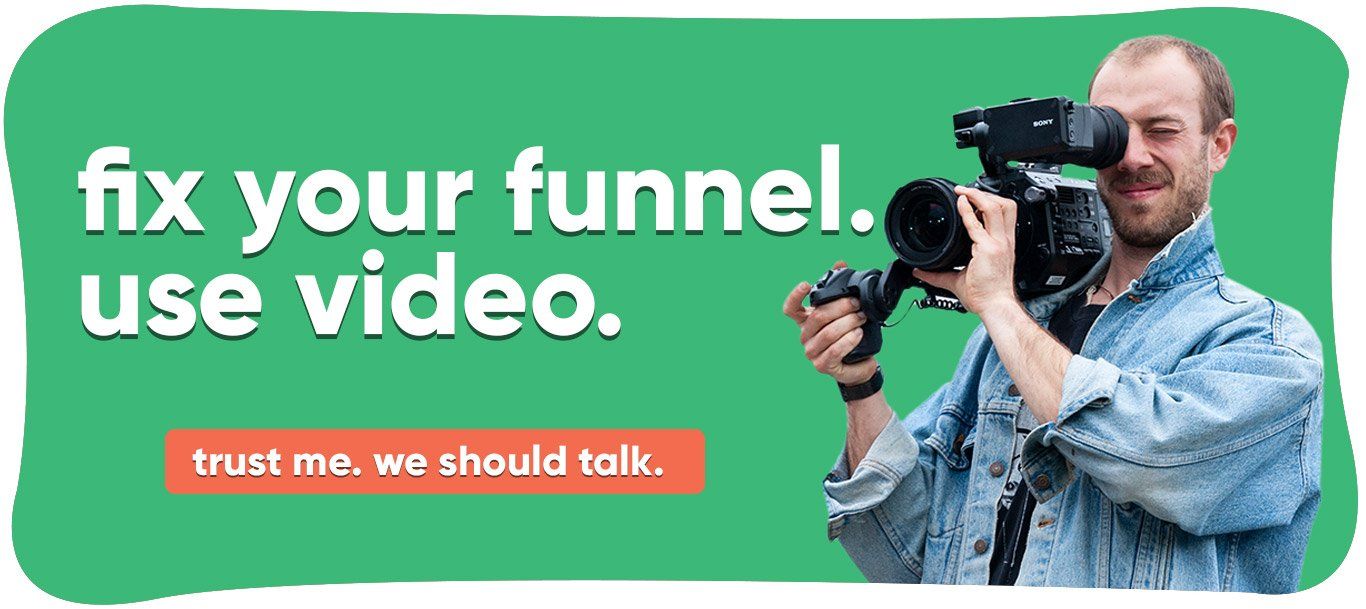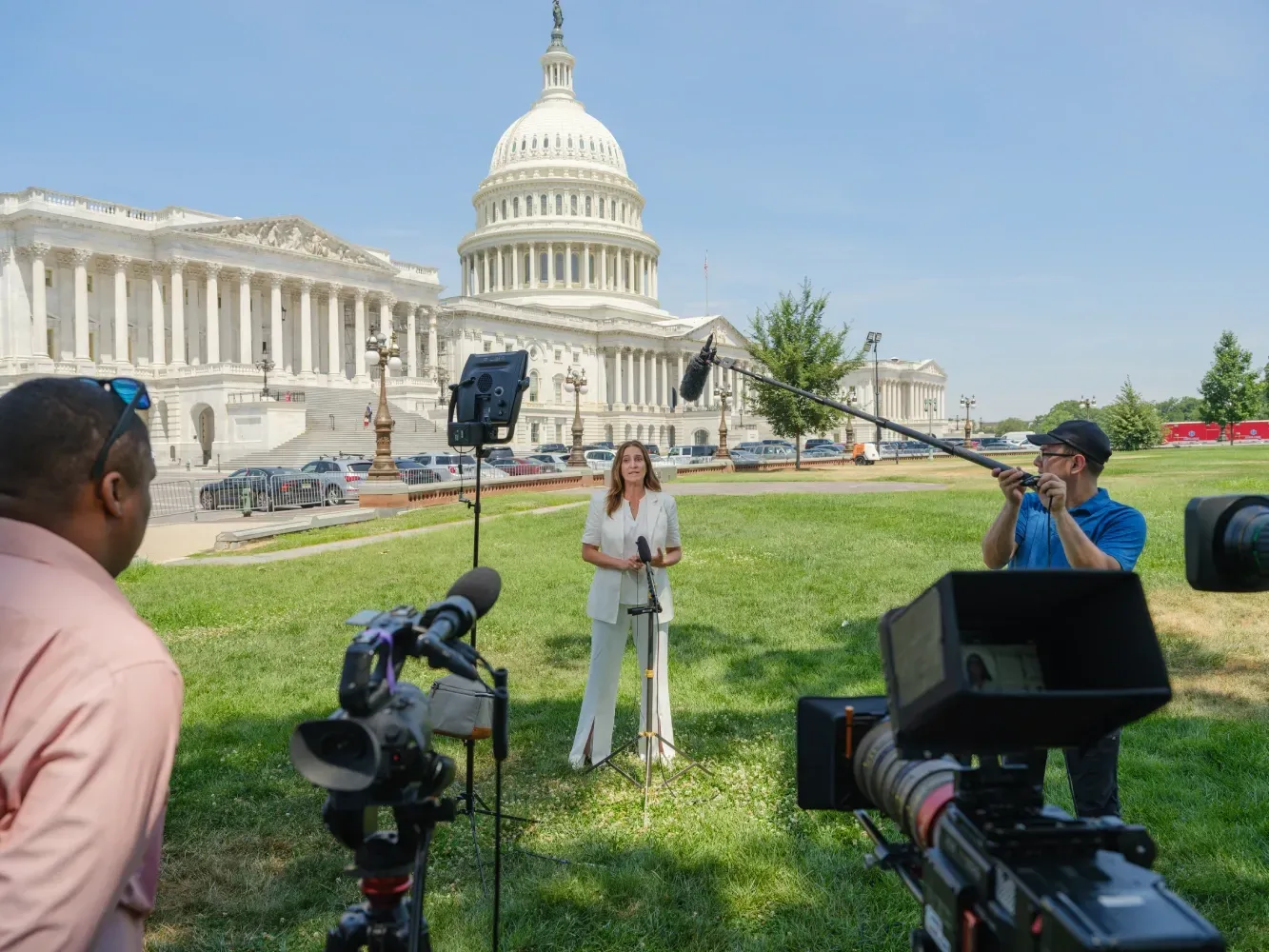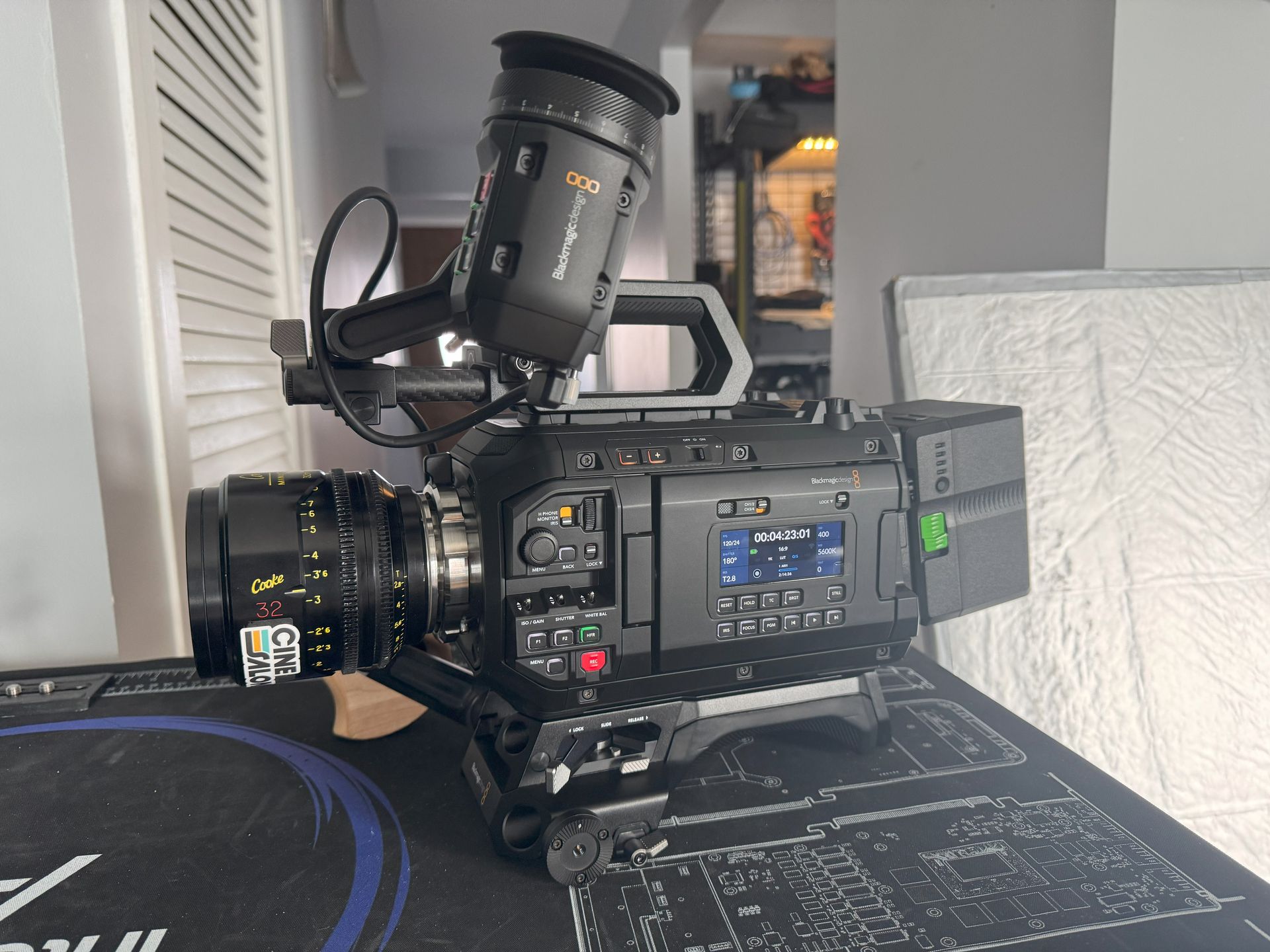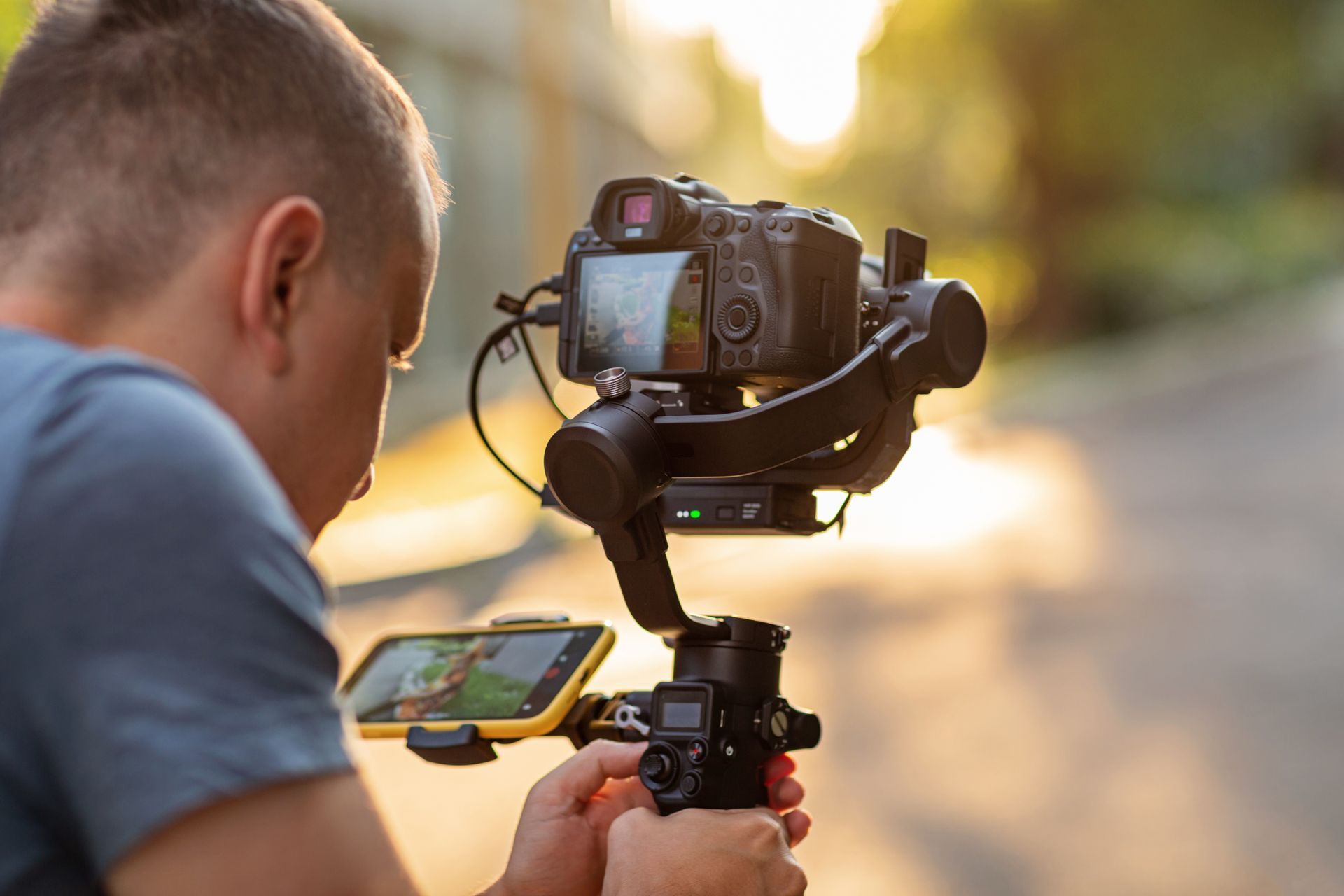Bad audio doesn't have to be the death of your project.
This complete guide will explain how ADR works, when to use it, and some of the added challenges it brings to your production.
If you don't have time for a long read, check out Andrew from Deity Microphones. He goes in-depth quick!
The ideal film shoot in terms of the overall sound quality will is one where all types of noise are eliminated, outside of a recording studio, this doesn't happen.
Noise emanating from film sets are inevitable and a nuisance which you have no other choice but to accept to manage effectively.
Even if you try your very best to bring down the clatter in your recording venue, various sounds will exist in your recording; People raising their voices, vehicles driving past, jets flying overhead, and some other uncontrollable white noise like the humdrum of air conditioning, rain, and staff or onlookers mingling about.
The bottom line is, it’s
virtually impossible to completely eradicate noise while you are on a shoot.
At times, all you have is a few hours to get the shots done and that perfectly quiet moment may never come. So, you do what you have to do and move forward in your shoot, even if you have don't have a clean take each time.
It may seem like a hopeless situation, but thanks to Automated Dialog Replacement or ADR audio, this worry is a thing of the past.
Let’s get to know what this process is all about.
What ADR audio is
Creating an ADR audio, or what some people still call “looping,” is achieving that controlled sound setting in a perfectly quiet environment and recording the audio part of the film all over again.
The goal is not just to relive that particular scene again and record the dialogue, but to improve it considerably.
At the end of every production, the audio team, along with the directors, typically sit down and review the film together to check if everything went well. They will evaluate the soundtrack, all actors' dialogues, and every nitty-gritty detail for quality and excellence in execution.
Though not all actors will want to go back for ADR, there most often are cases when the production will require it for utmost improvement, which will benefit everybody involved.
The sound team takes note of all the cues for the actors and schedules them for ADR.
Why do you need ADR audio?
Other than repairing a poorly recorded dialogue, what are the reasons for using ADR audio in a commercial video production or film? There are several.
The original actor is unavailable
At times, though very rare, some actors who are cast initially for a role are not available for some extra dialogues in other ventures. Others are hired to do an ADR audio for their voices.
For instance, Tom Hanks who was the voice of the famous Woody in the Toy Story movie series had to commission his brother, Jim, to do other ADR audio for some merchandise because he doesn’t have the time to do it all.
Alternative versions are required
Some musical soundtracks have explicit lyrics or language which may not be appropriate in all settings. Some who distribute this music need ADR audio to make multiple versions depending on the audience.
Group ADR or Loop Group is necessary
There are scenes in the production where shots are taken in a crowded place. It can be in a market or a business district. Though the main dialogue of the people in the scene has to be clearest and on top of everything else you can hear, it’s quite unrealistic not to put in other background sounds as well.
The group ADR audio creates this crowd scenes to make a film depictive of real-life scenarios.
Plot holes need to be addressed
Even if some films have already been finished with their shoot, there may be some plot holes that only present themselves as you review everything.
ADR audio, then, at this point, will be beneficial to fix these errors and make the movie a seamless and integrated whole.
Some accents must be fixed
As you know, actors frequently portray a character from a different culture and must speak their language or the appropriate accent.
However, it doesn't always work out. In the movie, "Elysium," actress Jodie Foster had to re-record via ADR all her lines in the film to replace the French accent that she used the first time around because it didn't quite cut it.
There were some unnoticeable issues with syncing but it's so much better than having to deliver a large work knowing things are wrong.
Adding or replacing lines is needed
There will always be lines that need correcting or enhancing as producers review the finalized shoot. It can be an execution that seemed perfect during the filming, but after editing seemed a tad bit off.
Perhaps there are missing elements to a particular scene, little things like a well-timed sigh or an exhalation of breath that helps bring profound emotions to a setting. ADR can fix all these.
Noise overcomes actor’s dialogues
Scenes that will be significantly improved by shooting them in specific locations or situations, such as right smack at Times Square, or maybe in the middle of a raging thunderstorm, or a windy day at the beach, will inherently have noise that will be impossible to eliminate.
This circumstance will require ADR audio to record the dialogues and be intelligible to the audience. It is on top of all the sounds essential in the scene.
How you do ADR
The trickiest part of recording an ADR audio is scheduling with the actors involved. Most often, members of the sound department may not be in the same location, state or country even, with the actors in the film.
They were available in the shoot itself, but the ADR is an entirely different arrangement. So, it's tough to gather all the essential people to an ADR recording together, but it's a task that must be done to begin your ADR.
Overview
When the schedule is set, the ADR venue will have the sound team and the director ready as well as the cues and lines prepared when the film was reviewed for ADR requirements. You will have the ADR mixer in place and the screen where everybody can see the movie.
The actor has to closely watch the videos and take note of the inflection, pitch and timing of the dialogue so his ADR audio will sync perfectly with the video.
As the actor does this, he is guided by continuous audio-visual cues, expressed in “beeps” to know when to start and when to stop. Typically, an actor may begin his replacement lines after the third beep.
The ADR audio then will be reviewed if it passes quality control by the team. If yes, this step is repeated until all the cues are finished. The editor will mix the ADR audio with the soundtrack of the film, and no one will ever notice that multiple parts of the movie have looping.
Essential Parts Of An ADR Recording
"The Scene Re-do"
Challenges
There is another challenge to recording ADR audio. It is apart from putting together all the people involved. It is to re-create the scene in the movie. It's difficult for the actors to bring out the particular emotion in the specific setting, especially without the other actors and the location to engage with.
The job of the ADR team is to, at the very least, replicate the audio set up as close enough to the original as technically possible.
Requirements
The sound mixer will play a significant role in this capacity and the microphones to be used must also perfectly match the ones used on the movie set. The ADR mixer will make sure that all angles and distances among the elements in the studio mimic those of the original shoot.
Ideally, they record two tracks. One is for the lavalier, and the other one is for the boom microphone. This way, they have the leeway to edit and optimize each sound as they mesh together with the production audio.
Example
The greatest obstacle to a scene re-do is re-creating a scene involving a crowd.
For instance, you can have two actors meeting at a restaurant, conversing for a time, and then their talk escalating into an argument. It’s not enough to show the build-up of the emotions emanating from the scene, but you also have to include in the audio of the others in the background.
To address this, you must record three tracks for the backdrop of the scene with several actors, that includes the “crowd.”
You can create hostility, mild aggravation and a pleasant audio environment and inlay that with the entire mix. It generates a soundtrack that gives you a feeling of realism while the scene is building up tension between the two main actors.
Remember, every minute detail is vital in ADR since you have to sync with the original production flawlessly. If not, the viewer will immediately sense something is off.
Actor Preparations
The ones who will bear the brunt in the ADR process apart from the ADR team are the actors who will need to carve out time in their busy schedules to re-record their lines, especially in a re-created artificial setting. In this respect, there is a need to be very polite in asking them to do an ADR audio and to explain in exact terms why it is necessary.
Schedule and willingness
The ADR team must ensure that the actors' calendar is not compromised to squeeze in ADR and that they are most comfortable with any arrangements in terms of the procedure.
It will significantly help to establish friendly relationships with the actors even from the original shoot and let them know about what ADR is and how it remarkably enhances a film when done correctly. This way, the actors can prepare for it if needed.
ADR engineers work hard to develop rapport with their subjects. They are lucky if they get to work with an actor several times as ADR recording becomes much easier when actors are comfortable.
But there are times when actors and recordists have never met, their only basis to preparations are short conversations with them as they arrive at the studio and give off their requests.
Often, these are things such as the amount of audio that they want to hear on their headphones, or sometimes they want to listen to and "parrot" lines.
The latter works just the same as other methods but will require heavy editing moving forward.
Pitch and timing
Pitch and timing are two of the most crucial elements in an ADR audio. If these two are even the slightest amiss from the video, the entire scene will go wrong, and viewers will notice.
Even if there were extended snippets of dialogue, these will be recorded in bite-size pieces and mixed into the video meticulously to be consistent with the set's overall sound.
Re-familiarization
Sometimes, the requirement for recording of ADR may be raised several months after the shoot, or perhaps the actors' schedule does not allow for an earlier time. In this situation, they may need to review the scenes again to get into their characters and execute an excellent dialogue.
This re-immersing is necessary so that the actors can remember the overarching context of the movie and will not veer away from the general mood of the film.
ADR In Action Scenes
Hugh Jackman doing ADR for Logan , shared via his twitter feed.
Challenges
Now that you have the re-created scene ready and the actors are prepared for the ADR recording, you may begin with the session. The tricky part about the process is attaining that delicate balance between the multiple views and input coming from the client, the director and everyone else who has a say in the quality of the ADR audio.
People in the ADR scene call it as "getting the booth's temperature." The engineer in charge of the ADR may be juggling people who are geographically apart and only connected virtually as well as the ones who are in the room with him. It would be best if you had years of experience to know when to share your feedback and when to keep your mouth shut because you want to avoid overstepping your bounds.
Example
For instance, there are cases when the actors won't be willing to do more than a few takes to make the ADR audio. One actress was such, and the ADR engineer decided to "help" her out by suggesting that she swing both arms and maybe walk a little to create movement on her shoulders. This action will make her dialogue sound more like a person walking from a distance and not give out that she's merely reading off a script.
The booth has gone eerily quiet, and the engineer feared that he had taken over the directing a bit too much and braced himself to be called out or reprimanded. However, as the ADR session ended, the supervisor and the mixer sent an email to say what a fantastic job he did that he was able to wing it in one shot! From experience, the particular actress has always despised doing ADR audio and opted to do the least amount of takes.
The bottom line is, always put the interest of the talent first above all else.
Dialogues and Non-dialogues
Sometimes, the ADR audio will not involve replacing a line that was initially in the movie. It can be an additional dialogue or non-verbal components that need to be put in to make the film so much better.
Non-dialogue
As previously mentioned, there may be sighs, or laughter, or a gasp that when supplemented onto the movie will make so much difference. It may seem inconsequential at first, but when added into the scenes, the output will speak for itself.
Look at the work that goes into recording sound effects!
Added Dialogues
If you’re wondering how to splice in an additional line into a movie when it wasn't there, to begin with, that's part of the creativity required of the job. This task falls on the ADR team's hand.
Though it's an arduous task to locate the perfect spot for the extra dialogue, it can be done. This feat is accomplished without the film coming out like one with too lousy dubbing.
Tricks and techniques
An extra line may be tacked from a cutaway scene using the seconds edited out and inserting the crucial additional dialogue.
There may be existing lines that you can ride on, such as those where the actor is not facing the camera. Just make sure that you put in the lines in conjunction with the head movements of the actor so the scene will not be visually jarring.
Apart from cutaways, you can also add lines on wide shots since the actors are not explicitly shown on the scene and you can quickly put the dialogue in.
Real life Examples
According to ADR experts, very few people, producers to actors, love doing ADR recordings.
Next to going to the dentist and the DMV, if they can do without ADR, they would. It's going to be a next to impossible task to find actors who sincerely enjoy this difficult undertaking.
However, there are actors out there who have gone through such and yet are happy to share about their experience. Let’s get to know some of them.
Meryl Streep
Meryl Streep is a rarity in this respect. She is famous for her passion for ADR.
She willingly joins sessions where cues for ADR are being checked and assessed and would immediately re-do dialogues where she thinks improvement is in order.
There were even cases when she replaces an entire conversation altogether.
Marlon Brando
Another actor who sticks out from the rest of the pack is Marlon Brando.
According to
Walter Mulch , the famous editor known for his fantastic work in the film, "The Godfather,"
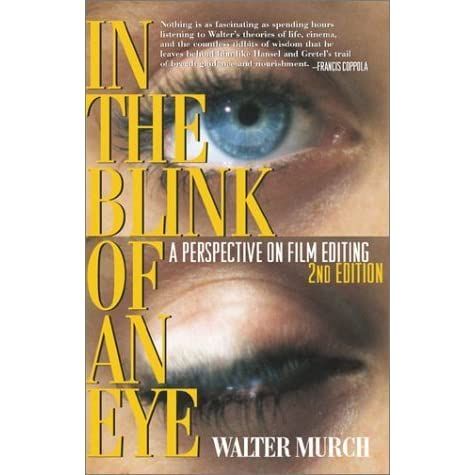
*Also check out his book, In The Blink of An Eye . It's a great intro into editing and the thought process behind it.
Marlon had admitted to purposefully mumbling on the shoot so that he can work on ADRs when he has seen the final movie output. For him, it was better to see the full context of the film before giving his best performance on your dialogues.
Before getting any ideas, this isn't practical most of time...
Hugh Jackman
In the movies where actor Hugh Jackman played the role of Wolverine, there were several scenes where he is running towards his opponents, through dense forests or city locations, and has several physical battle scenes with them. Most of these are non-dialogue shots and have a lot of background noise or crowd sounds that could make his non-verbal sounds unclear.
Hugh Jackman was more than willing to go through every cue shot to make sure that all the gasps, heavy breathing from all that running and fighting, screams of pain, and shouts of triumph are executed with his most excellent ability - that’s why he is for ADRs.
He is also the perfect example of an actor who needs to get in the mood of the scenario, harness his inner ability, re-create a scene in his heart and head to do a fantastic ADR audio. While he records, he runs on the set, punches, even jumps when he needs to. Talk about dedication to what he does.
Warning, not everyone is like these actors!
It still boils down to your ability as the ADR team head to work out all the details discussed in this post and come out with an ADR audio that will genuinely and impressively make box-office hit movies.
Parting Words
Having learned how vital an ADR is and how it can significantly impact scenes on a film, it's essential to note a few things. ADR cannot always be used as a go-to resort or a fallback mechanism.
It's not advisable to have ADR as an excuse not to always put your best foot forward as an actor or as a director when on your original shoot.
It's still best to do it right the first time and to do it better every time, as the old Japanese saying goes.
Indeed, ADR can hugely enhance a movie when executed properly as it mostly improves the emotional element of any scene - this is the one that truly connects with the viewers.
Make sure that the need for an ADR is established from the very first review of the final shoot!
Kudos to all ADR engineers in the world who are considered to be the unsung heroes of our time. They earned this title without even trying because of the inherent nature of their work.
As they say, when your ADR is a resounding success, those who watch the movie that you worked should never be able to notice at all.
You know you did the voice in your head. Internal ADR?

Get total clarity on your video marketing and paid media with our FREE comprehensive data audit.

